Welcome to another post of my strange animals series where you get to meet some of the weirdest, coolest, and craziest animals in the world.
I just had a look over my past posts and I noticed how I have featured all kinds of weird animals. Fish, parasites, alien-like, caterpillars, spiders, nudibranchs, mammals, you name it! But I have never posted a single butterfly
So, today what I have for you is a butterfly. It might not be the most colorful or exotic or beautiful or whatever. But it definitely is the most distinct, as it is the only butterfly species with transparent wings:

Glasswing Butterfly (credit)
Scientifically described as Greta oto, I think it's no wonder why the species is commonly known as the glasswing butterfly!
Now let's learn more about it!
Where can I find one?
These butterflies occur from Central to South America as far south as Chile. They are known to travel great distances and are occasionally reported as far north as Mexico and Texas. Here's a map to give you a better idea:

Distribution Map Of The Glasswing Butterfly (credit)
Since they are easy to breed, they are becoming more and more popular as an exhibit in zoos so you don't have to travel to the Americas to see one. From personal experience, I know you can see some in London Zoo and I bet you can find a zoo near you that exhibits them if you really want to see one from up close.
Heck, you can even buy your own breeding kit!
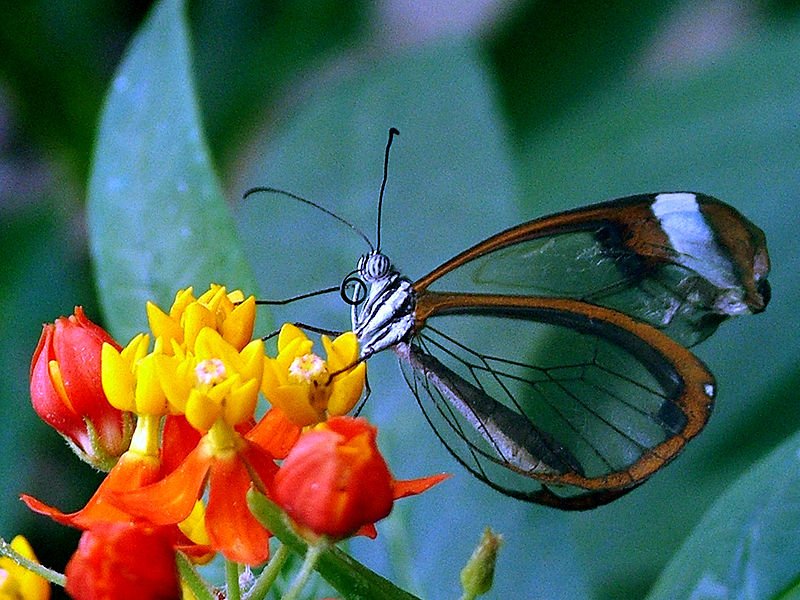 (credit)
(credit)
What's The Deal With The Transparent Wings?
Undoubtedly, the species most notable and distinguishing characteristic is the transparent wings, hence its common name. Thanks to them, the butterflies blend in with the environment and become less visible to potential predators.
The transparency of the wings results from three distinct properties:
- The low absorption of visible light
- The low scattering of light passing through them
- The low reflection of light falling on them
Unlike other animals with transparent surfaces that keep light reflections low but only from certain angles, the wings of G. Oto have a low reflection rate from all angles. Up until very recently, we knew very little about the actual "science" behind the wings. However, a recent paper published on Nature, revealed that this is thanks to special nanostructures covering the transparent regions of the wings:
"This omnidirectional anti-reflection behaviour is caused by small nanopillars covering the transparent regions of its wings. In difference to other anti-reflection coatings found in nature, these pillars are irregularly arranged and feature a random height and width distribution. "
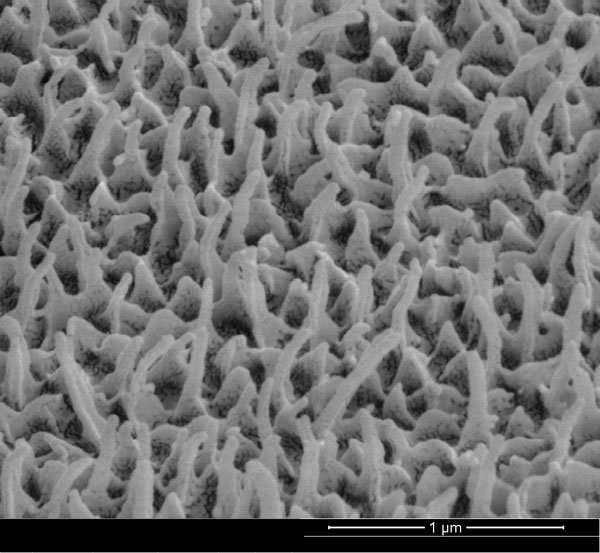
Scanning electron micrograph of the nanopillars on the wings of G. Oto (credit)
What Do They Eat?
The diet of G. Oto is also very interesting. Being transparent is only their first line of the defense, being toxic is their second weapon against potential predators. But what diet has to do with that?
Well, females typically lay their eggs on plants of the tropical toxic Solanaceae (Cestrum). Once born, the young caterpillars start to gorge themselves with these plants and store their toxic chemicals to their body, making them poisonous to anyone who dares to feed on them.
Adult males are also believed to be toxic as they feed on flowers whose nectar contains pyrrolizidine alkaloids. Interestingly, the pheromones produced by males to attract females during mating have also been found to contain the same compounds.
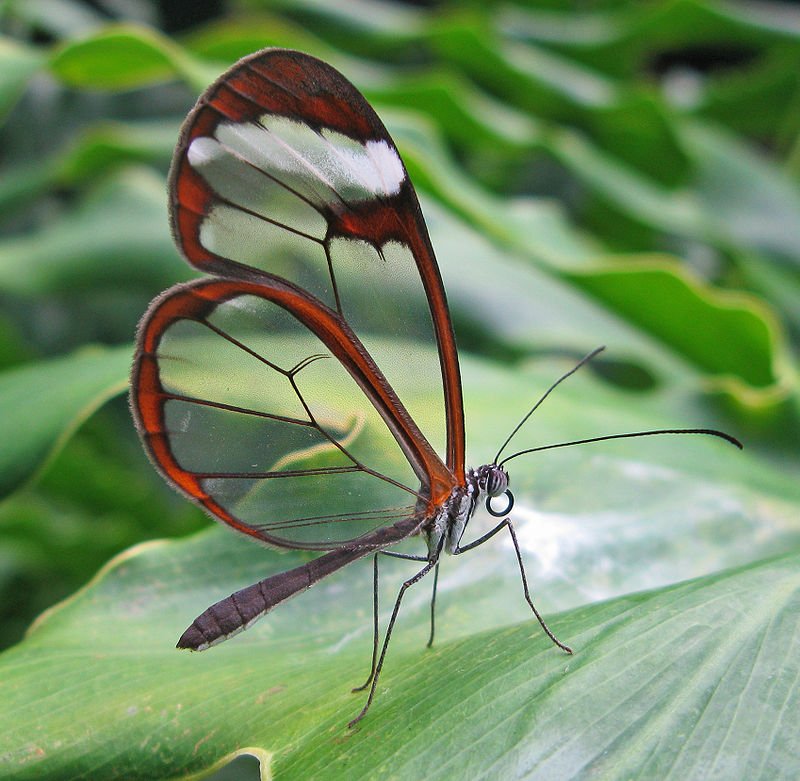
(credit)
Reproduction & Lifecycle
The lifecycle of G. Oto is typical of what you would expect from a butterfly, with not really anything special or unusual about it. It goes from egg to larvae to pupae to adult butterfly.
Here's a photo showing all the stages of the insect:
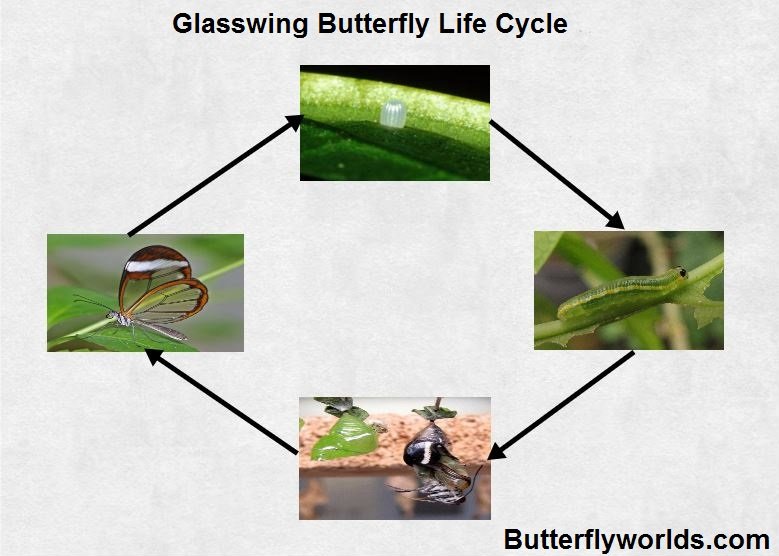
Glasswing Butterfly Life Cycle (credit)
The End
So, these are pretty much all the basics you need to know about this amazing creature. Below you will find some more quick interesting facts and some videos showing it in all its glory. Don't forget to check the references if you want learn everything there is to know about the species!
Some Other Quick Interesting Facts
- Adults can reach speeds of up to 8 mph and have been documented to fly 12 kilometers in one day
- The species exhibits a number of interesting behaviors, such as long migrations and lekking
- In spanish they are known as "mariposa de cristal", meaning "crystal butterfly"
- Their wing span is 5.6 to 6.1 cm (2.2 to 2.4 in)
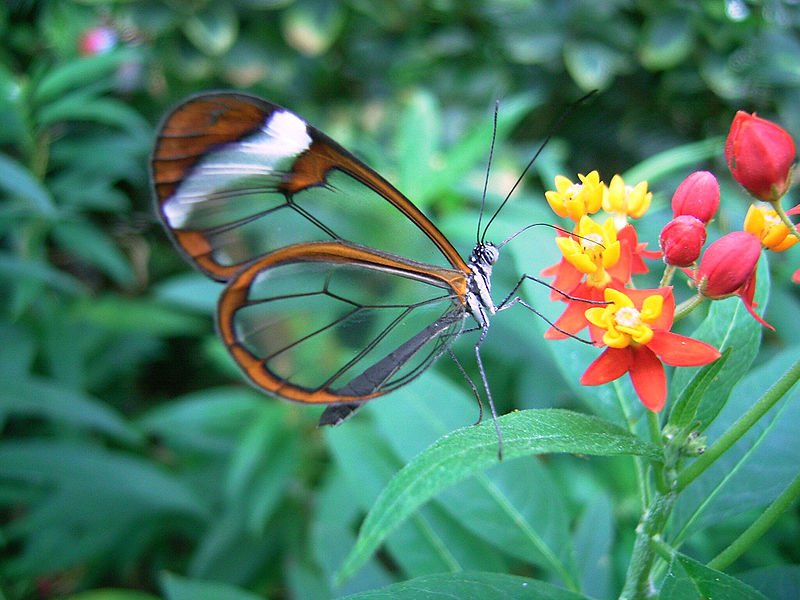
(credit)
Videos
More Strange Animals
- 3 Unbelievable Examples Of Extreme Sexual Dimorphism
- You Won't Believe What This Tiny Worm-Thing Grows Out To Be
- Pseudis paradoxa: The Frog That Grows Down Instead Of Up ?!
- Bumblebees Learn to Play Soccer in Weird Study!
- You Won't Believe What This Tiny Baby Fish Grows Out To Be
- This Alien-like Worm Will Freak You Out!
- Cymothoa exigua: The Parasite That Turns Into A Tongue ?!?!
- 8 Strange Animal Stuff I Learned The Past Few Days #1
- New Cave Dwelling Animal Discovered With The Help Of Smelly Cheese
References & Further Reading
- https://en.wikipedia.org/wiki/Greta_oto
- https://www.sciencedaily.com/releases/2015/04/150422084352.htm
- https://www.sciencedaily.com/releases/2013/09/130909172211.htm
- https://www.nature.com/articles/ncomms7909
- http://dx.doi.org/10.1126/sciadv.1600149

Steemstem & SteemitEducation
Steemstem is the go-to place for science on Steemit. Check it out at @steemstem or visit the #steemSTEM channel. A big thank you also goes to the guys from @steemiteducation for supporting my content!
Greek Community
A final big thanks goes to my fellow greeks for their support and love. Follow the greek-trail or check the facebook page for more greek content!






